Category Archives for Aviation
Garmin® announces availability of the GPS 3000, enabling ADS-B and WAAS/SBAS operational capability
Recently certified as an ADS-B position source for the Embraer E135/E145 and Legacy 600/650
We’re excited to announce the availability of the GPS 3000, a high-integrity GPS position sensor that seamlessly interfaces to existing avionics to help meet Automatic Dependent Surveillance-Broadcast (ADS-B) Out requirements. Also, targeting the air transport and defense markets, the GPS 3000 is designed as a WAAS/SBAS position source for select Flight Management Systems (FMS). Aircraft that are eligible to utilize the GPS 3000 as an ADS-B position source include the Embraer E135/E145 and the Legacy 600/650. Supplemental Type Certification (STC) for the GPS 3000 in these aircraft is currently available from FTI Engineering, in cooperation with Atlas Air Service in Germany, and can be installed throughout the entire Garmin dealer network.
“Garmin continues to lead the industry with the most fielded ADS-B solutions that span all segments of aviation, including a wide-range of commercial, defense, regional and business aircraft,” said Carl Wolf, vice president of aviation sales and marketing. “We are thrilled to provide these aircraft with a solution that is cost-effective and is an easy to install alternative to the existing avionics manufacturer’s service bulletin.”
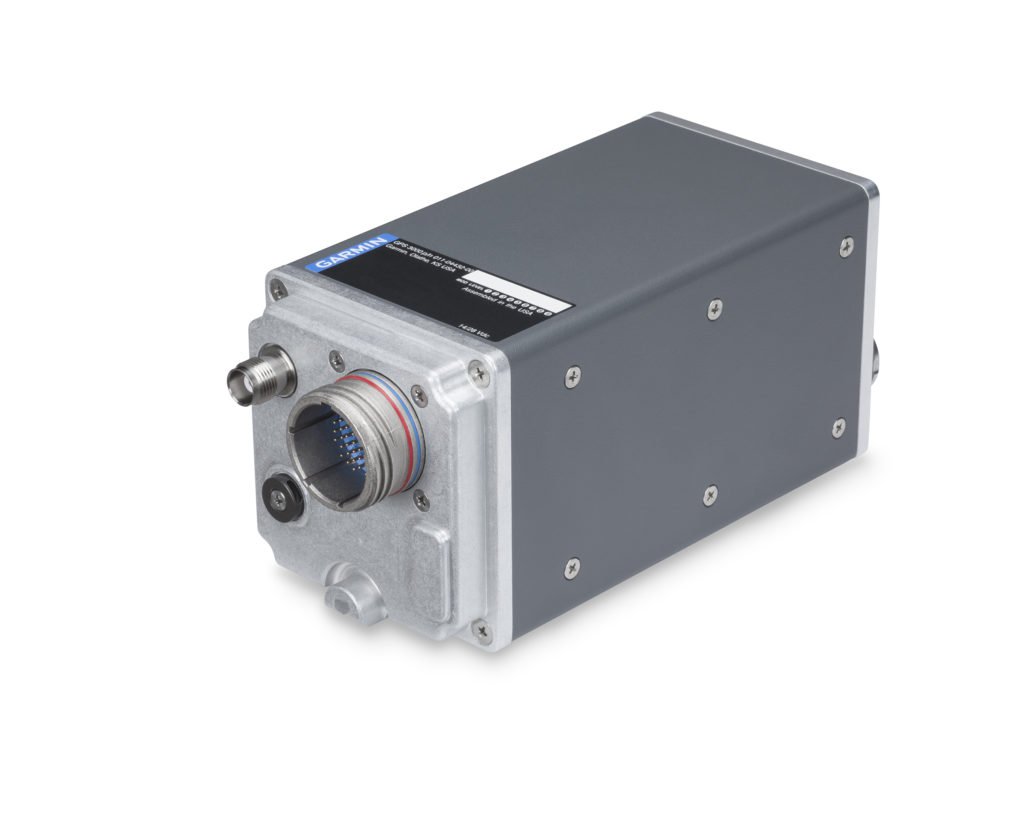
Garmin GPS 3000.
A rugged, standalone and certified Wide Area Augmentation System (WAAS)/Satellite-Based Augmentation System (SBAS) GPS, the GPS 3000 meets DO-160 and DO-178B standards and is designed specifically for the harsh environmental conditions encountered by commercial aircraft. This compact and remote-mount solution utilizes enhanced WAAS/SBAS GPS satellite signals to provide precise position data through a standard interface. It also meets applicable high-integrity ADS-B position source standards, including TSO-C145d Class 3.
The GPS 3000 is also designed to interface with select FMS to support GPS guidance throughout terminal, enroute and approach navigation1. When configured appropriately, the GPS 3000 is capable of providing position information to an existing FMS to meet requirements for Required Navigation Performance (RNP) and can support GPS-based vertical approach navigation, such as Localizer Performance with Vertical (LPV) approach guidance.
European Aviation Safety Agency (EASA) STC of the GPS 3000 in the Embraer E135/E145 and Legacy 600/650 is available from FTI Engineering, in cooperation with Atlas Air Service, as well as Garmin dealers. FAA validation of the STC is pending. For additional information regarding the most comprehensive suite of ADS-B solutions for commercial, defense, regional and business aircraft, visit www.garmin.com/BusinessADSB or contact businessADSB@garmin.com.
The post Garmin® announces availability of the GPS 3000, enabling ADS-B and WAAS/SBAS operational capability appeared first on Garmin Blog.
https://www.garmin.com/en-US/blog/aviation/garmin-announces-availability-of-the-gps-3000-enabling-adsb-and-waas-sbas-operational-capability/
New Enhancements and Features within FltLogic Scheduling Program
We’ve incorporated new enhancements and features within FltLogic, a comprehensive scheduling program that integrates with FltPlan.com. New to FltLogic, an enhanced reporting tool allows customers to apply filters and develop reports that can be sorted by date, aircraft, passenger and more. Also new for FuelerLinx subscribers, FltLogic can now help pilots identify the best FBO for fuel at the departure and destination airports with the display of contract fuel pricing. Additionally, company logos can also be uploaded and displayed on all emailed itineraries. These features are available immediately within the web-based FltLogic scheduling program.
FltLogic incorporates enhanced reporting that organizes and categorizes flight department activities in a customizable, easy-to-read report. For example, users have the option to develop a yearly flight report for a specific pilot within the department, detailing total and average hours flown, number of legs or total distance. Aircraft reports can also be generated within FltLogic, displaying detailed information like hours, distance and legs flown, fuel usage and more and sorted by a user-selectable date range. Additionally, expenses can be organized within FltLogic and exported to other data sources so operating costs and invoicing are easier to manage. This new, enhanced reporting tool within FltLogic furthers flight department efficiencies and gives customers greater insight into pilot, aircraft and passenger activities.
The initial phase of the new contract fuel pricing feature within FltLogic helps customers more easily identify the best fuel prices at the departure and destination airports. With a FuelerLinx subscription, customers can log into FltLogic to view fuel pricing from over 70 contract fuel providers and compare fuel prices between Fixed Based Operators (FBO’s). FltLogic then displays the FBO with the best fuel price based on the departure and destination airports specified, offering additional cost savings.
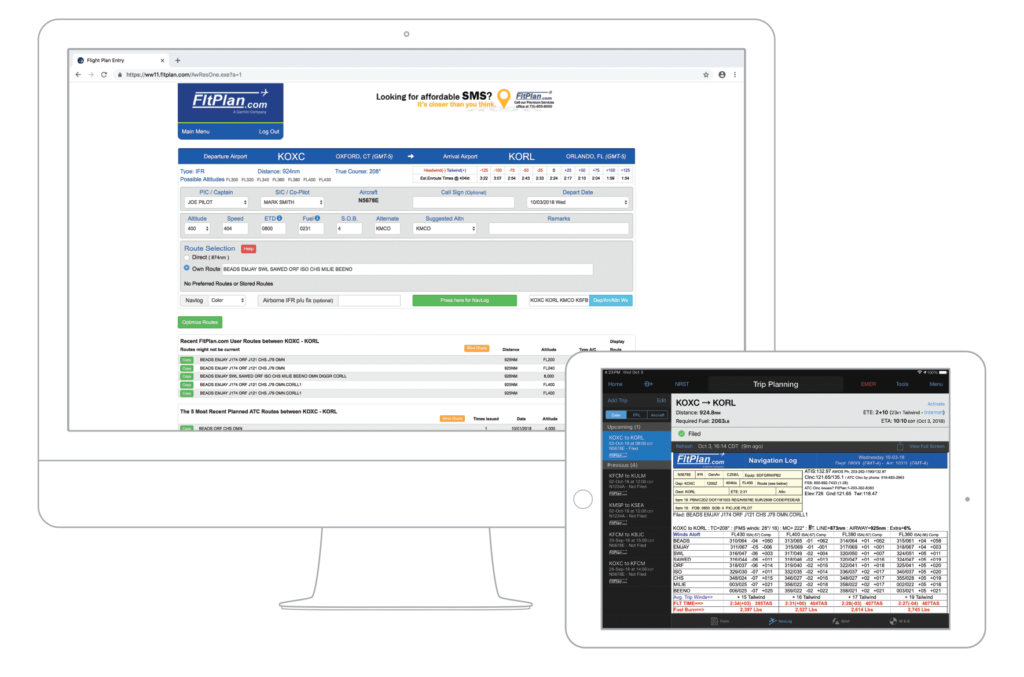
FltLogic has enhanced the available reporting functions by adding departmental breakdowns and the ability to export information in .csv format. For example, a company can view and export a yearly flight report for a specific pilot within the department, detailing total and average hours flown, number of legs or total distance. Aircraft reports can also be generated within FltLogic, displaying detailed information like hours, distance and legs flown, fuel usage and more and sorted by a user-selectable date range. Additionally, expenses can be organized within FltLogic and exported to other data sources so operating costs and invoicing are easier to manage. This new, enhanced reporting tool within FltLogic furthers flight department efficiencies and gives customers greater insight into pilot, aircraft and passenger activities.
FltPlan.com is a free website that offers electronic flight planning, flight plan filing and many premium services to enhance any flight department. FltLogic is the only scheduling program integrated directly with a flight planning and filing website. FltLogic provides complete trip coverage, including trip requests, trip creation and post-flight reporting.
These new FltLogic software enhancements are available immediately. New customers and flight departments can learn more or schedule a FltLogic demonstration by contacting support@FltLogic.com or 203-262-8500. Visit the FltPlan.com exhibit at the Schedulers & Dispatchers Conference (SDC2019) Jan. 29 – Feb 1, 2019 in San Antonio, TX. for additional information, or visit www.fltplan.com or www.fltlogic.com.
The post New Enhancements and Features within FltLogic Scheduling Program appeared first on Garmin Blog.
https://www.garmin.com/en-US/blog/aviation/new-enhancements-and-features-within-fltlogic-scheduling-program/
Terminal Environment Safety: Visual Approach Guidance
Imagine you’re flying a VFR flight plan, or you’ve just been cleared for a visual approach from an IFR flight plan. You’ve been enjoying a relaxing flight thus far in cruise – chatting with your passengers or listening to music, and periodically checking in with Flight Following and ATC. As you approach your destination and prepare for descent into an unfamiliar airport over a region you’ve never flown before, you realize the workload is starting to increase – significantly. As you precisely manage your engine, airspeed and get instructions from approach and air traffic control, you start to wish you had some additional information and guidance as you head into this new region.
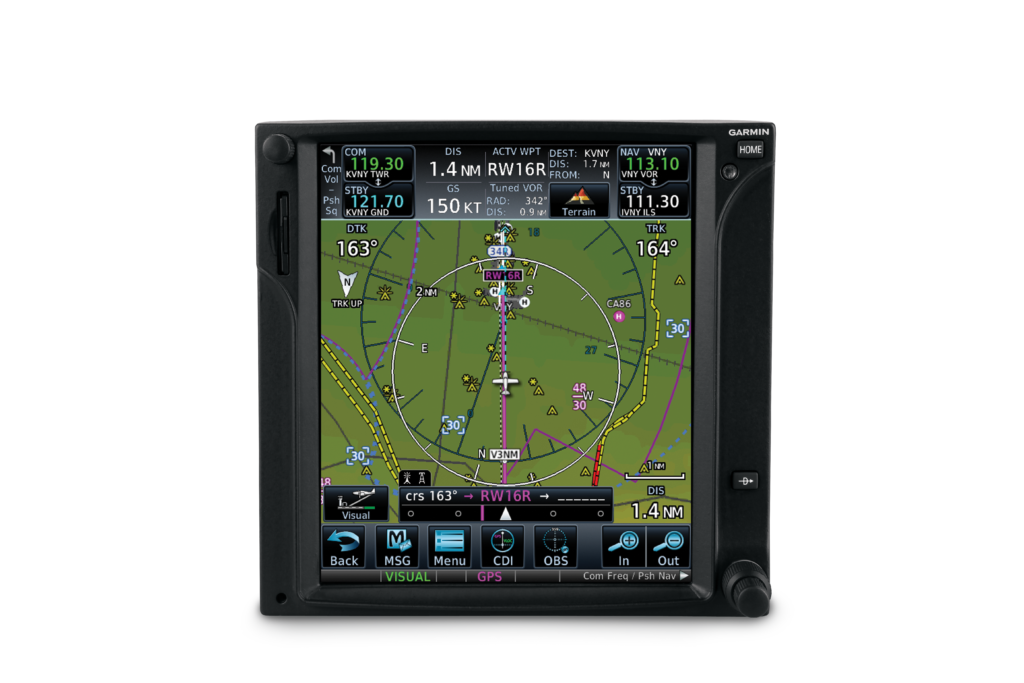
Visual Approach Guidance within GTN 750/650 series navigators.
That’s why we created visual approach guidance, available within our GTN 750/650 series navigators and G3X Touch flight displays for experimental aircraft – so pilots can receive helpful navigation information during the landing sequence of VFR flights. Here are a few ways it can help.
Fly A Controlled Descent
With visual approach guidance, pilots can manage the descent to landing in visual flight conditions. Vertical guidance is provided based on a published glide path angle or a three-degree glideslope from the threshold of the runway.
Terrain and Obstacle Avoidance During Approach
The vertical guidance provided during the descent to landing also takes into consideration terrain and obstacle clearance. This is especially helpful if you’re flying over unfamiliar regions. Get added awareness on potential hazards that may lie within the approach area.
Avoid Landing on the Wrong Surface
Visual approach guidance can also help ensure you’re headed toward the correct runway and avoid a wrong surface event. Larger airports often times have parallel offset runways and aligned taxiways, and If you’re unfamiliar with the airport, the layout could be confusing. Once a runway visual approach is selected within the GTN 750/650 or G3X Touch, it will help you remain on track to the runway for which you’ve been cleared to land.
To learn more about our suite of Terminal Safety Solutions including SurfaceWatch and SafeTaxi visit garmin.com.
The post Terminal Environment Safety: Visual Approach Guidance appeared first on Garmin Blog.
https://www.garmin.com/en-US/blog/aviation/terminal-environment-safety-visual-approach-guidance/
TeamX Introduces GTR 200B Comm Radio with Bluetooth Intercom Designed for Experimental Aircraft
We’re excited to announce the GTR 200B, a comm radio and Bluetooth-enabled intercom designed specifically for experimental and amateur-built aircraft. In addition to advanced auto-squelch, stereo intercom, alert inputs, standby frequency monitoring and more, Bluetooth connectivity allows pilots to connect a smartphone or tablet, adding even more capability to the cockpit. Additionally, superior integration with G3X Touch provides more features and benefits that further reduce pilot workload.
“TeamX, our dedicated team for experimental and amateur-built aircraft, continues to raise the bar with the introduction of the GTR 200B, the industry’s first, all-in-one comm radio with built-in intercom and Bluetooth,” said Carl Wolf, vice president of aviation sales and marketing. “Based on the successful adoption of the first-generation GTR 200, we’re excited to bring the GTR 200B to the market to serve as the industry standard in comm radios.”

Garmin GTR 200B
The Bluetooth-enabled GTR 200B combines state-of-the-art features from a comm radio and two-seat intercom to reduce pilot workload. Bluetooth connectivity adds more functionality to the cockpit, giving pilots the option to wirelessly connect a smartphone or tablet to the GTR 200B. Pilots can easily make phone calls and listen to audio entertainment, or call Flight Service to obtain a take-off clearance at an uncontrolled airport – all through the radio. The GTR 200B also incorporates 3D Audio processing to provide an exclusive in-flight experience. With stereo headsets, incoming audio is spatially separated to reflect how people process sound and conversation by differentiating audio sources and their unique locations or seat positions within the aircraft. Using stereo headsets, listen to a demonstration of 3D Audio by visiting this website: http://www.garmin.com/3daudio.
Advanced integration with G3X Touch sets the GTR 200B apart from other radios on the market. For example, the GTR 200B can receive a frequency in the comm directly from the G3X Touch flight display or a compatible Garmin portable. The airport identifier and frequency type are also displayed alongside the frequency. For example, “KOSH TWR” is displayed below the Oshkosh tower frequency so it’s easier to confirm the correct frequency is in the active or standby positions.
The GTR 200B has a bright, sunlight readable display and an intuitive interface that features built-in shortcuts and configurable softkeys. Pilots can configure the softkeys to provide one-touch access to emergency frequency tuning, pilot audio isolation, saved frequencies list, music mute and more. Home theater-like music effects add to the innovative sound quality provided by the GTR 200B, allowing pilots to select bass boost levels, as well as equalizer effects, including rock, classical and pop. Optionally, pilots can also install switches on the flight controls to perform common functions like swapping a frequency from standby to active without moving their hands from the controls. The GTR 200B also saves the 20 most recent frequencies used and conveniently stores up to 20 pilot-selectable frequencies.
The GTR 200B boasts a slim design (1.35-inches tall) so it can easily adapt to a variety of aircraft panels. The powerful 10-Watt comm also supports 14 and 28-volt aircraft and offers 25 kHz channel spacing.
The GTR 200B is available immediately for a suggested price of $1,395. Visit www.garmin.com/experimental for additional information.
The post TeamX Introduces GTR 200B Comm Radio with Bluetooth Intercom Designed for Experimental Aircraft appeared first on Garmin Blog.
https://www.garmin.com/en-US/blog/aviation/teamx-introduces-gtr-200b-comm-radio-with-bluetooth-intercom-designed-for-experimental-aircraft/
Andreas Hermansky Receives Appareo Pilot of the Year Award
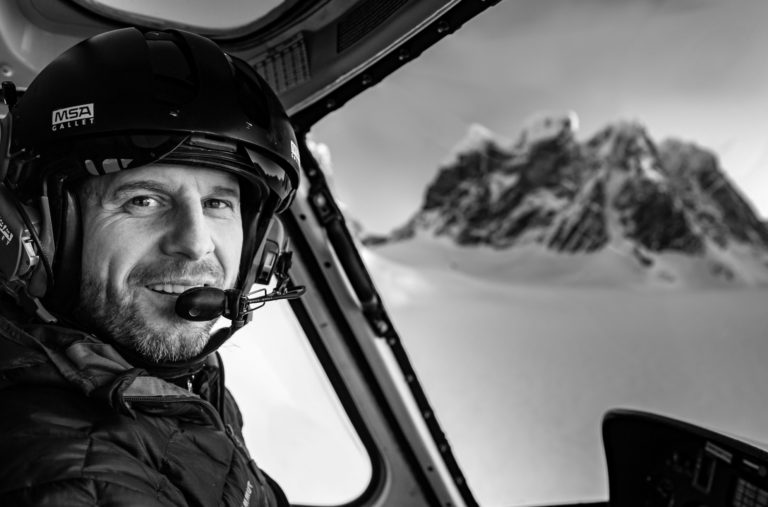 Andreas Hermansky is recognized as the 2019 Appareo Pilot of the Year, an award presented annually by Helicopter Association International (HAI) as part of their Salute to Excellence program. This award recognizes an outstanding single feat performed by a helicopter pilot during the year or extraordinary professionalism over time.
Andreas Hermansky is recognized as the 2019 Appareo Pilot of the Year, an award presented annually by Helicopter Association International (HAI) as part of their Salute to Excellence program. This award recognizes an outstanding single feat performed by a helicopter pilot during the year or extraordinary professionalism over time.
Hermansky was recognized for his work with the Denali National Park and Preserve mountaineering staff, mobilizing the park’s helicopter to fly mountaineering rangers to an accident site with an elevation of 11,000 feet. Hermansky flew several reconnaissance flights to the area because of deteriorating weather conditions. The nominator noted that the series of short-haul flights highlights Hermansky’s exceptional flying ability and his ability to work in concert with the ranger team to accomplish critical missions. Read more about his heroic efforts in Vertical Magazine.
The Appareo Pilot of the Year award will be presented to Andreas at HAI HELI-EXPO in Atlanta, Georgia this March.
https://www.appareo.com/2019/01/11/andreas-hermansky-receives-appareo-pilot-of-the-year-award/
Aviation Icon meets Next Gen Avionics Technology
Over the past four decades the Sikorsky S-70/UH-60 Black Hawk helicopter has established itself as an icon of versatility in aviation. It can be found in the service of nations all around the world. It’s a symbol of rescue for those in an emergency at sea or in remote locations, and a warrior against wild fires. This medium-lift utility helicopter excels at being, well, utilitarian – excelling at many different missions. An aircraft this valuable shouldn’t simply be retired, it should be utilized, and with utilization over any period of time, comes the need to upgrade – the type of upgrades that can carry a proven airframe into a new generation of service. That’s exactly why we teamed with Ace Aeronautics in Guntersville, Alabama – to combine the advanced capabilities of our G5000H integrated flight deck with the now legendary Black Hawk airframe. This modernization is known as the ACE DECK VL-60.
Garmin G5000H Integrated Flight Deck
The G5000H installation in the ACE DECK VL-60 helicopter incorporates four 12-inch high resolution widescreen displays along with two touchscreen controllers that serve as the pilot interface to the flight deck. On the primary flight displays (PFD) and multifunction displays (MFD), pilots can view flight information alongside maps, checklists, weather, geo-referenced charts and more across all four displays. Our Helicopter Synthetic Vision Technology can also depict 3-D terrain, obstacles, wires, traffic and the terminal environment for increased information throughout every phase of flight.
G5000H upgrade for Sikorsky S-70/UH-60 helicopters.
Flying the G5000H-equipped ACE DECK VL-60
The G5000H not only represents a modern upgrade for the Black Hawk airframe, it’s also designed to ease pilot workload and enhance situational awareness from inside the cockpit. “The 4K displays are clean, crisp, and provide an exceptional viewing area for the [Primary Flight Display], Synthetic Vision, video, and custom ship synoptic pages. And, the geo-referenced approach plates and procedure cueing completely simplify instrument approaches,” said Randy Nolin, Ace Aeronautics Vice President of Engineering/Test Pilot and retired US Army UH-60 Black Hawk pilot.
The G5000H provides pilots with enhanced situational awareness in the cockpit.
Pilots transitioning from older style analog gauges and legacy instruments in a S-70/UH-60 shouldn’t be too concerned learning to fly behind the next generation flight deck. “It was a very easy transition [flying with G5000H]. The controls are extremely intuitive, and the touchscreen works much like a smartphone. With the Garmin [G5000H] all of the functions are easy to access,” added Nolin.
We’ve built the Garmin aviation brand on providing safety enhancing features in all of our avionics solutions—everything from portable navigators through our fully integrated flight decks. “The Synthetic Vision coupled with the worldwide terrain and obstacles database give the G5000H an awareness that legacy Black Hawk pilots have been asking for since the Black Hawk began. Now it’s here,” said Kenneth Czarnecki, Ace Aeronautics Chief Pilot and retired US Army UH-60 Black Hawk pilot.
Garmin G5000H
A Medium-Lift Utility Helicopter for the Future
The G5000H-equipped Ace Deck VL-60 helicopter is a great example of combining a proven airframe with modern avionics—a platform with increased capabilities and safety-enhancing features. “It is a generational and technological evolution for helicopter flight,” said Nolin.
For more information about our G5000H integrated flight deck for medium-lift helicopters, visit garmin.com/helicopters. To learn about Ace Aeronautics and the ACE DECK VL-60, visit aceaero.com.
The post Aviation Icon meets Next Gen Avionics Technology appeared first on Garmin Blog.
https://www.garmin.com/en-US/blog/aviation/aviation-icon-meets-next-gen-avionics-technology/
Garmin GNS 480 Navigator Approved GPS Source for Stratus ES
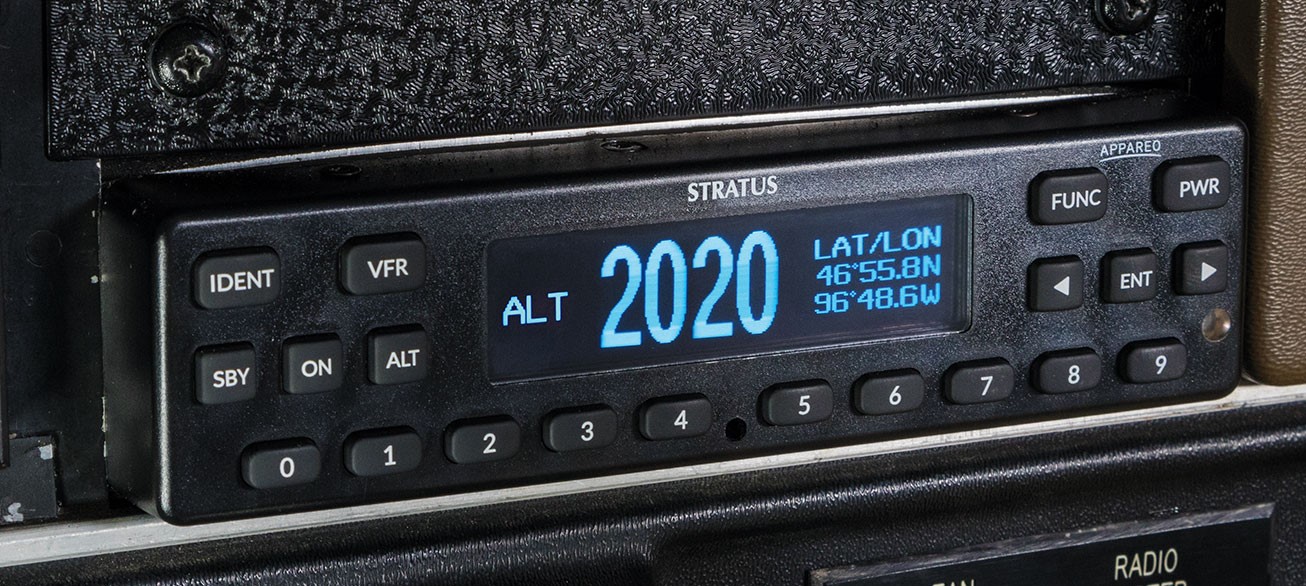
The Garmin GNS 480 navigator has been approved and added as a WAAS GPS source for our Stratus ES transponder. Stratus ES was built without GPS in order to provide affordable ADS-B Out option for aircraft owners who have already invested in WAAS GPS. Stratus ES is FAA ADS-B rule-compliant when paired with any of the following navigators:
-
- Garmin 480, 430W, 530W, 6XX, 7XX
- Avidyne IFD440, IFD540
Stratus ES and Stratus ESG are both certified 1090 Extended Squitter (ES) transponders designed to replace aging transponders while also equipping an aircraft with ADS-B Out. Stratus ESG includes built-in WAAS GPS for one-box 2020 compliance, while Stratus ES will make an aircraft rule-compliant when paired with popular models of Garmin and Avidyne navigators. “We have continued adding to the AML-STC since the initial certification in 2016, based on market demand” said Kris Garberg, Appareo Aviation President. See our AML-STC list.
Both of our transponders qualify for the newly re-introduced $500 FAA ADS-B rebate program, which lowers the retail price to $1,995 for Stratus ES and $2,495 for Stratus ESG, plus the cost of installation. Like all Stratus products, they were designed for simple installation and configuration. With the common 1.65” form factor, they easily replace existing transponders without requiring costly panel modifications.
Stratus transponders can be connected to a Stratus ADS-B In receiver for the complete ADS-B In/Out experience. They are the only transponders that can share an aircraft’s external antenna with a portable ADS-B receiver in the cockpit, which greatly enhances the signal strength of the receiver by utilizing the external aircraft antennas. This feature is compatible with many popular brands of ADS-B receivers; a variety of interface kits are available.
Find an authorized Appareo dealer to install your Stratus ES.
https://www.appareo.com/2018/12/03/garmin-gns-480-navigator-approved-gps-source-for-stratus-es/
Pilots of Appareo: Matt Dondoneau
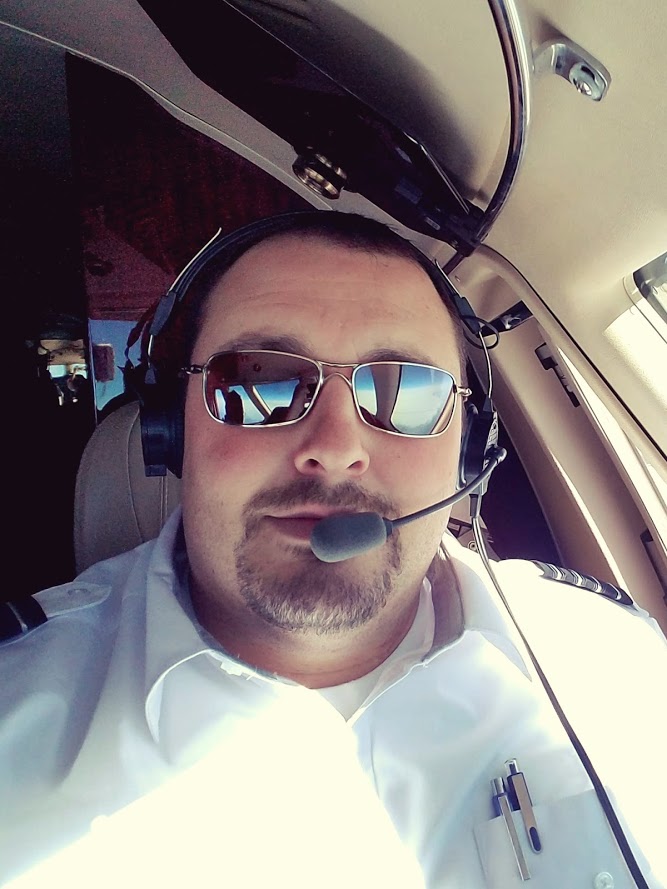 One of the secrets behind how we create great aviation products for pilots is this: many of us are pilots ourselves! While only 0.5% of the U.S. population has a pilot’s license, more than 5% of Appareo employees do. That’s 10 times the national average!
One of the secrets behind how we create great aviation products for pilots is this: many of us are pilots ourselves! While only 0.5% of the U.S. population has a pilot’s license, more than 5% of Appareo employees do. That’s 10 times the national average!
Collectively, our pilots log hundreds of flight hours in their free time. Let us introduce you to one now: Matt Dondoneau, Aviation Key Account Executive.
Matt been a pilot for just under 20 years and describes it as, “absolutely defining my life.”
First introduced to aviation through the movie Top Gun, Matt attended the University of North Dakota when he earned a scholarship into UND Aerospace to pursue a degree in Aviation and Aerospace Engineering. After his first flight, he was hooked. Matt graduated with an Aviation degree but did not get his degree in Aerospace Engineering. His time and degree from UND Aerospace has been extremely helpful for his career at Appareo.
Matt started working at Appareo as the Key Account Manager for Aviation in March 2018. Matt describes his job as, “Acquiring new business and managing the relationships for Aerospace companies, whether it is an engineering project, OEM products, or both. I’m not responsible for the aviation products that Appareo sells directly to consumers, but I’m always on the hunt to find different ways to use those products in the industry.”
Throughout his career, Matt has been involved in nearly every aspect of professional flying, so when we asked him two big questions about being a pilot he had a lot to say.
What was your proudest moment as a pilot?
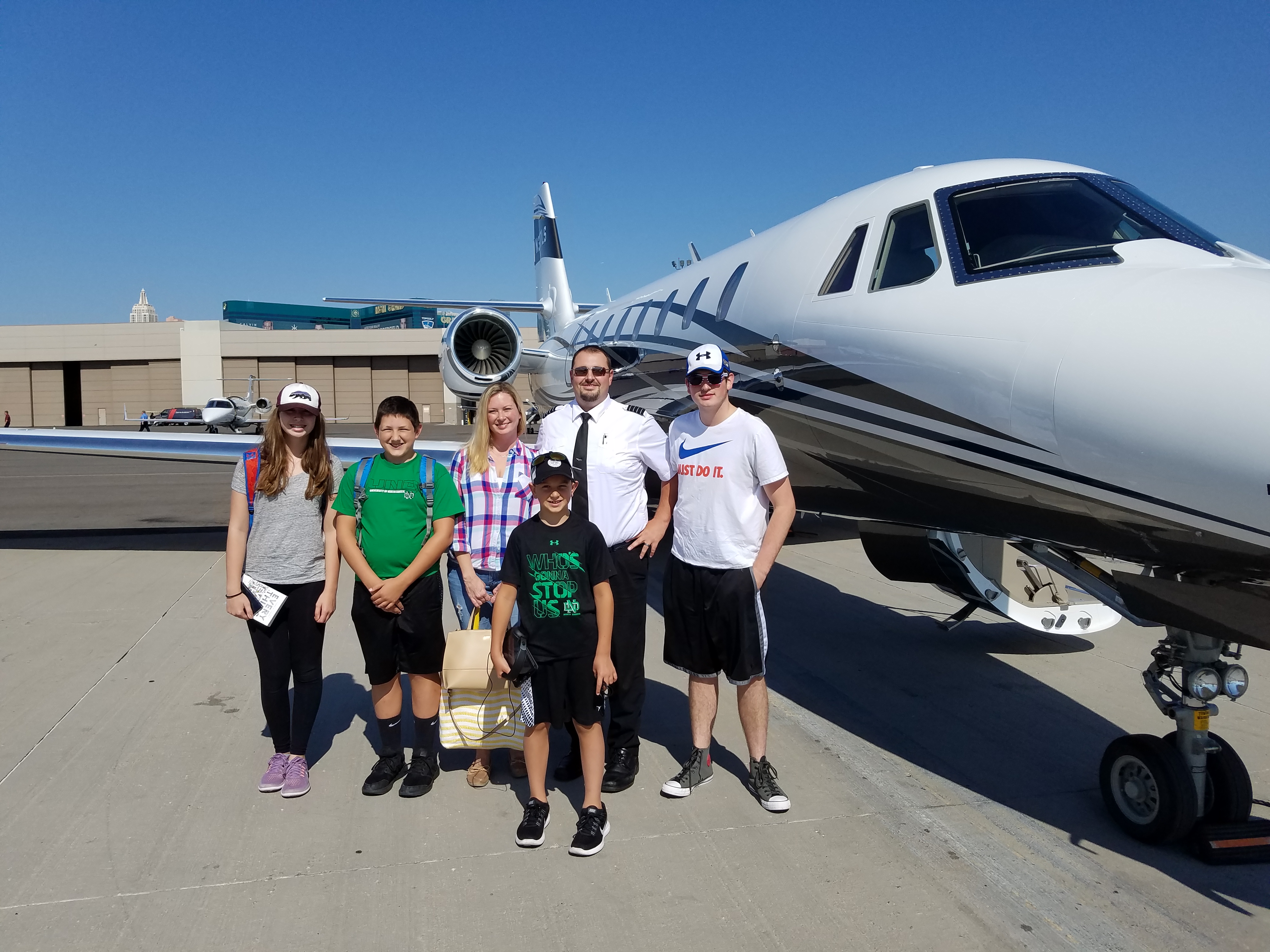 I’ve been lucky enough to be involved in nearly every aspect of professional flying, so finding a single proudest moment is really difficult. I’ve spent time flight instructing, flew charter and medevac, flown for Northwest and Mesaba Airlines, and also was the chief pilot of a corporate flight department that flew domestically and internationally. Each area of aviation that I’ve spent time in has its own prideful moments.
I’ve been lucky enough to be involved in nearly every aspect of professional flying, so finding a single proudest moment is really difficult. I’ve spent time flight instructing, flew charter and medevac, flown for Northwest and Mesaba Airlines, and also was the chief pilot of a corporate flight department that flew domestically and internationally. Each area of aviation that I’ve spent time in has its own prideful moments.
As a flight instructor, I was able to see the look on students faces as they flew for the first time. I also have been fortunate to teach my kids how to fly. Each one has flown a jet, including my youngest who first flew a jet when he was 6 (with dad’s help, of course)!
In the airlines, I was a test pilot for a new aircraft type and got to pick up brand new aircraft from the factory and put them through acceptance flights. Most people don’t know what “new airplane smell” is, especially in airliners. Flying in the corporate world was extremely exciting and allowed me to see the world, but it was an incredible experience the first time I flew non-stop across the Atlantic. Such a small fraction of pilots get to do that in their flight careers.
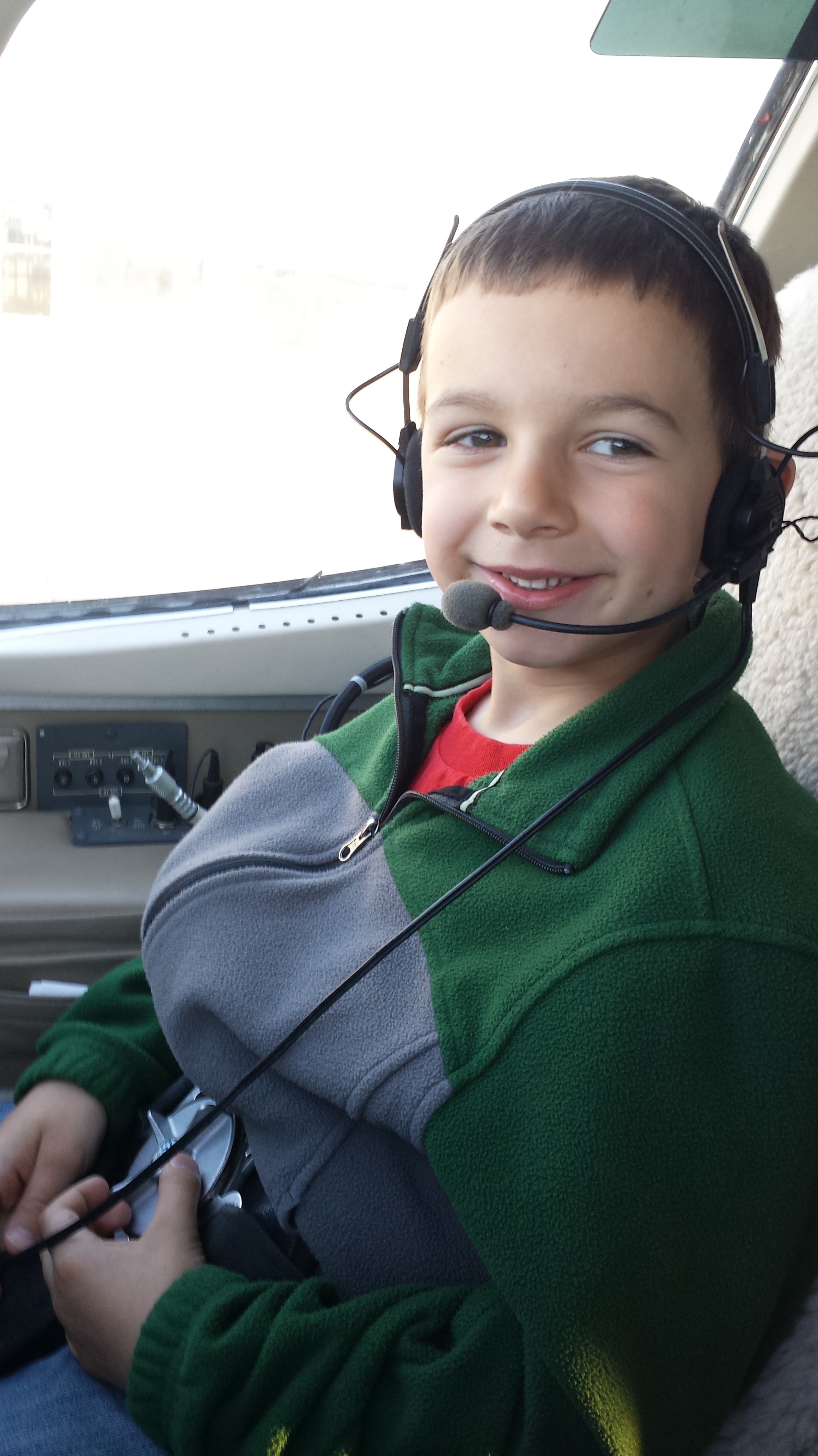
With all of the time spent in the air, I may still have to choose my medevac flying as the proudest, however. I experienced some terrible situations and saw some horrible things, yet there were happy moments. The most memorable instances were when your pager would go off at three in the morning and you’d find out a child on a heart transplant list finally got the call that a match was found. Often, when someone gets a call of an available organ, you have as few as 4 hours to pick them up and get them across the country and into an operating room. It is an incredible feeling to pick up someone that didn’t know how many tomorrow’s they had left and to get the opportunity to help them have a new lease on life. Some of those flights I’ll never forget.
How does being a pilot help your work at Appareo?
Aviation is an extremely complicated business. With the amount of jargon, requirements, and procedure, it really takes someone who has been there to understand a customer’s needs. Sometimes, the customer doesn’t even know what they need, but my background can fill in the blanks. Aerospace companies often can be difficult to navigate if you don’t talk the talk or walk the walk. I think my background lends itself to some instant credibility that would take longer to acquire without my time in the industry. I hope that my experience also helps others at Appareo understand what the customer is looking for, or why something is significant in aviation. Knowing the things I had access to in my flying days, but more importantly, the things I wish I had access to, is really exciting to bring to a company where we can bring those ideas to life.
https://www.appareo.com/2018/11/20/pilots-of-appareo-matt-dondoneau/
The Dream, Challenge, and Reward of Building an Experimental Airplane
The experimental/amateur-built category is becoming increasingly popular in the United States and throughout the world. Kit manufacturers such as Van’s Aircraft, Kitfox and CubCrafters are fielding thousands of completed aircraft, with experimental airframes reaching unprecedented levels of capability and safety.
There are a number of reasons a prospective aircraft owner might decide to build an experimental aircraft rather than purchase a certified model. From a budget standpoint, building an experimental can often times be more cost-effective. Builders can sometimes spread the total cost over the duration of the build through sub-kits (empennage kit, wing kit, fuselage kit, etc.), while creating an airplane that fulfills a similar mission to a certified model. Experimental builders also have an opportunity to specifically configure an aircraft, outfitting elements like the engine, avionics and cockpit ergonomics in a way that meets specific needs. But for many, the challenge, and ultimate reward of building an airplane satisfies a unique dream. The dream of being a ‘builder.’ We sat down with Hunter from our aviation engineering team, who talked about the process of building his own Van’s Aircraft RV-7, and what it meant to achieve his dream.
The Journey
The journey begins with a decision – the decision to go experimental. While new or used certified aircraft are a great option, they may not always meet every prospective aircraft owner’s needs.
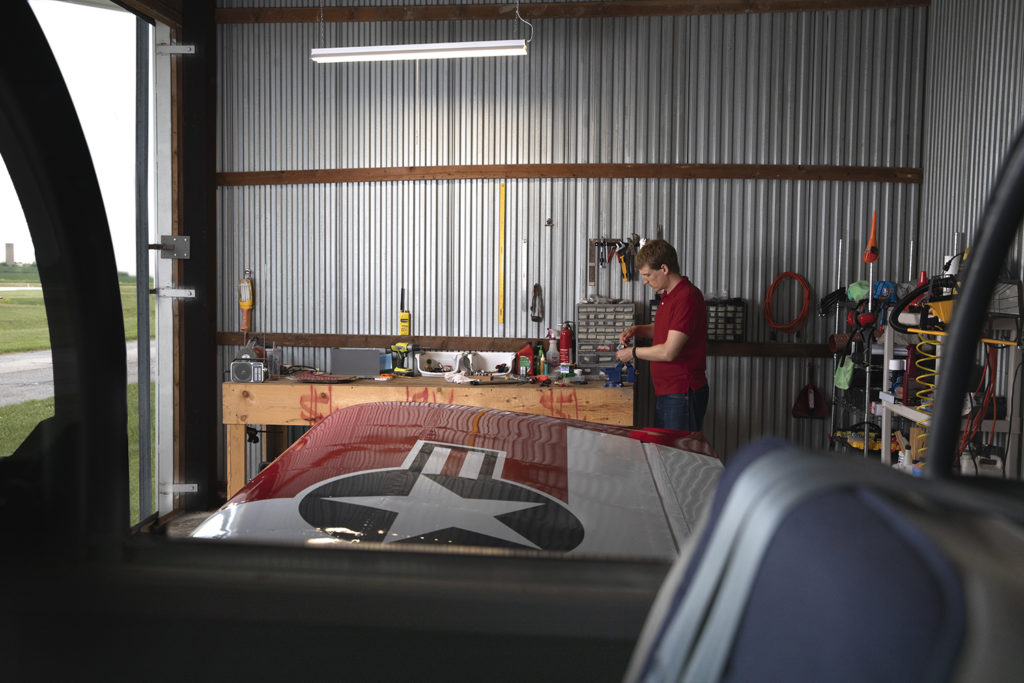
“For me, a reason to go experimental is the freedom you have to equip the airplane and maintain it the way you want,” Hunter said. “From the get-go, I wanted the safety-enhancing features, the autopilot, the weather, the traffic, all the stuff you can get with a G3X system.”
How much time can one expect to spend on a homebuilt project? Well, it depends. For Hunter, it was five and a half years – or 2,750 hours in direct build time. Build time can depend on any number of factors. Everything from aircraft type, to personal life (family commitments, work, etc.) can determine how much time can realistically be committed to a build.
At times, the process may be daunting, but it’s important to maintain perspective, goals and complete one task at a time. “When I was in the process, I was just thinking about what’s the next step, what’s the next thing – I kept my head down and kept pushing,” Hunter said. “Every so often, I’d pop up and say, ‘Oh, my goodness, I’ve got a tail that’s totally done. I’ve got wings that are done. The fuselage is coming together. It’s starting to look like an actual airplane.”
Even through inevitable mistakes, he emphasizes the importance of remembering the end goal. “Just don’t get discouraged. You’re going to mess things up. It’s okay. What’s important is that you pick yourself up and keep pushing.”
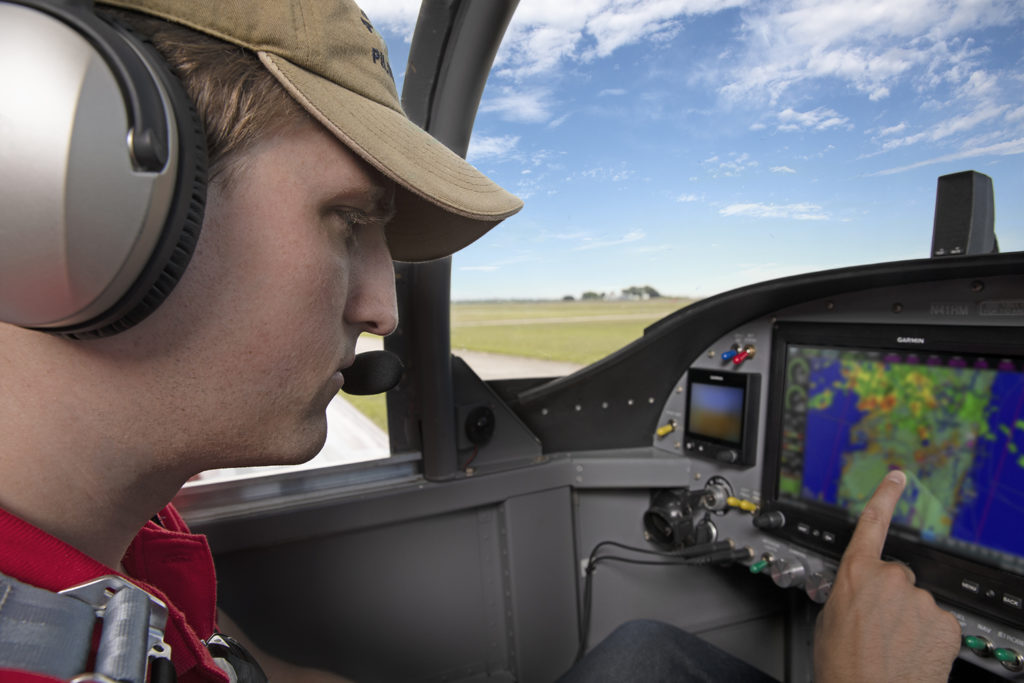
The Result
Finally, after all the blood, sweat and tears (sometimes literally), you have an airplane. An airplane that not only fits your needs, but one you can be personally proud of.
“The RV, in particular, is a really great performing airplane. It flies better than any other airplane that I had previously rented.” Hunter said. “I think there’s the aspect of having taken on a big project, a big challenge, and kind of pushing through all of the hard parts and getting to the finish line. I take pride in having done that.”
Are you interested in building an experimental aircraft and equipping it with state-of-the-art avionics? Be sure to check out our TeamX avionics for experimental aircraft. Visit garmin.com/experimental to learn more.
The post The Dream, Challenge, and Reward of Building an Experimental Airplane appeared first on Garmin Blog.
https://www.garmin.com/en-US/blog/aviation/the-dream-challenge-and-reward-of-building-an-experimental-airplane/
2019 Aviation Training: Expanded Schedule, New Opportunities
Our Aviation Training Team is expanding their 2019 schedule to include additional classes and instructor-led courses throughout the United States. These classes are available for our G3X Touch flight display for experimental aircraft, GTN 650/750 touchscreen navigator series, G500 TXi/G600 TXi and G500/G600 flight display systems, Garmin Integrated Flight Decks, and GWX series aviation weather radar. Created to provide pilots with a unique approach to learning Garmin avionics, the schedule includes hands-on, scenario-based training opportunities and courses tailored to the classroom environment—all taught by certified flight instructors.
G3X Touch Installation and Pilot Training
New for 2019, we are hosting a two-day course to discuss and review fundamentals associated with installation considerations and maintenance of the G3X Touch flight display. This pilot training includes how to effectively navigate and use the PFD/MFD, communication, navigation and surveillance equipment within the system. The two-day course is $495 and will take place in Olathe, Kansas, April 15-16, 2019, and October 17-18, 2019.
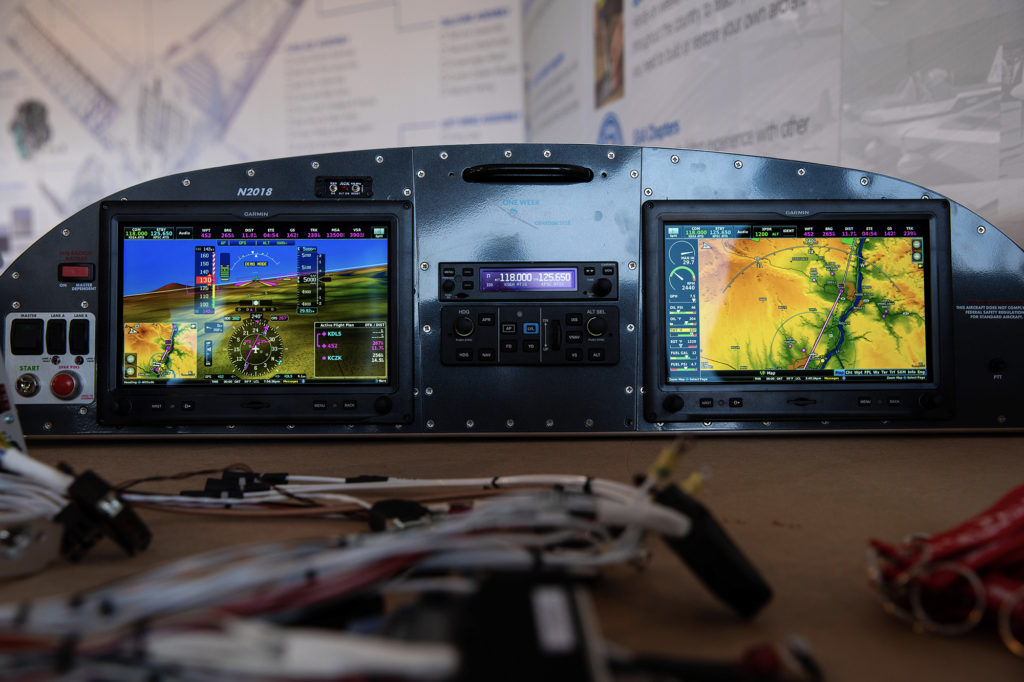
Garmin G3X Touch flight display for experimental aircraft.
G1000/G1000 NXi Pilot Training
Intended to serve both novice and experienced aviators, this two-day course will explore the capabilities of our G1000 or G1000 NXi Integrated Flight Decks by providing hands-on, scenario-based training in a classroom environment. The course will focus on flight planning, instrument procedures, vertical navigation, the automatic flight control system and more. The cost to attend the G1000/G1000 NXi training class is $749 and the class will be held in Olathe, Kansas, on March 7-8, 2019, June 10-11, 2019, and September 26-27, 2019.
GTN 650/750 & Flight Displays
For pilots who are considering an avionics upgrade or those who already have an existing GTN 650/750 and a Garmin flight display, we are hosting several classes tailored specifically to flying with these avionics. This two-day class provides a collaborative environment designed to help pilots transition from analog flight instruments to Garmin flight displays. A presentation and practice format offers attendees the opportunity to practice real-world in-flight scenarios with Garmin avionics. The cost to attend this pilot training class is $625 and is scheduled in Olathe, Kansas, for January 14-15, 2019, March 2-3, 2019, August 22-23, 2019, and November 4-5, 2019.
GTN 650/750 Pilot Training
Pilots may also take advantage of training classes tailored specifically to the GTN touchscreen series. This two-day class is available for $495 and highlights loading and activating departures, visual approaches, and instrument approach procedures, flying holds, flight plan modifications and more. GTN-specific class dates are also hosted in Olathe, Kansas, and are scheduled for March 25-26, 2019 and October 26-27, 2019.
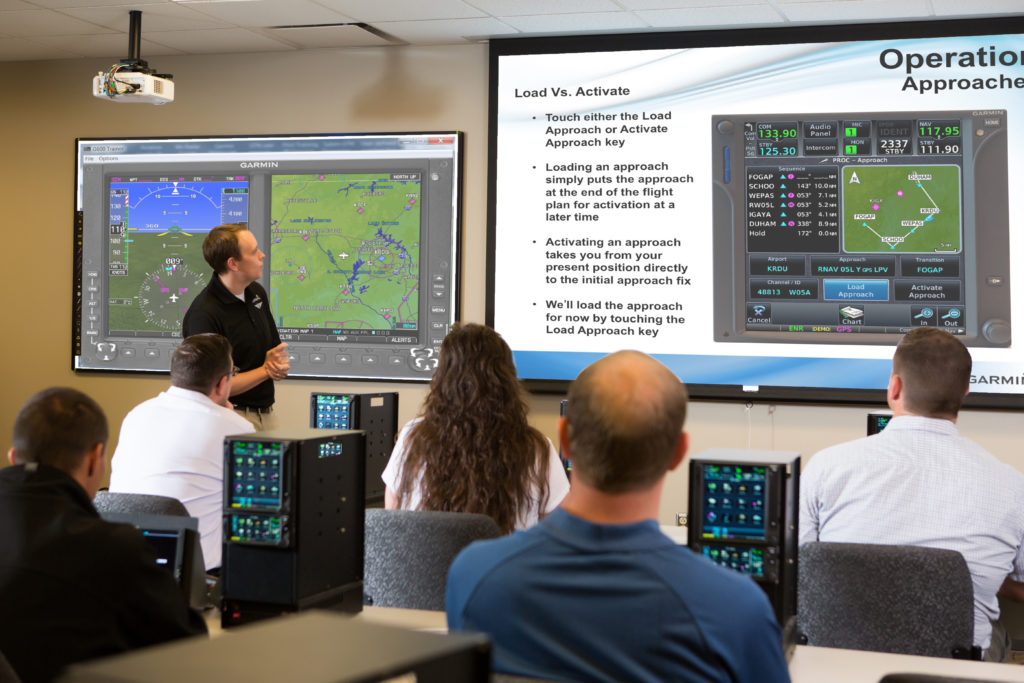
Pilot Training Classes – Regional U.S. Locations
Our classroom-based training opportunities will be hosted throughout several new locations within the United States in 2019. They will provide the same in-depth instruction offered at Garmin Headquarters, covering the G500 TXi/G600 TXi, G500/G600, G3X Touch and GTN 650/750 avionics suites. These regional classes cost $795, and dates and locations include:
- February 21-22, Garmin Chandler Office; Chandler, AZ
- April 4-5, Garmin Cary Office; Cary, NC
- June 20-21, Ace Aviation; Seattle, WA
- September 5-6, Ramada by Wyndham Englewood Hotel & Suites; Englewood, CO
- October 10-11, Garmin Chanhassen Office; Chanhassen, MN
- November 20-21, Broward College; Ft. Lauderdale, FL
Integrated Flight Decks
Integrated Flight Deck training is tailored specifically to aircraft type and flight operations performed by pilots attending the class. These on-demand courses are dependent upon instructor availability, training aids and other resource considerations. These classes provide a hands-on learning opportunity in a structured environment for pilots flying with the G1000/G1000H, G3000 or G5000/G5000H Integrated Flight Decks.
Aviation Weather Radar Class
Successful operation of the weather radar requires an understanding of radar principles, as well as operational considerations and techniques. This class starts with the fundamentals of ground-based and airborne weather radar systems and covers best practices for using the Garmin GWX 70, GWX 75 and GWX 80. The class concludes with a scenario-based module on weather threat management. New for 2019, this class is suitable for pilots with little weather radar experience, pilots looking to refine their weather radar skills and those transitioning from other radar systems.
For customers interested in web-based online courses, we’re offering several eLearning courses for the G3000 and G5000 Integrated Flight Decks, Link 2000+, GTN 650/750 Essentials and Weather Radar Operations. These eLearning courses are self-paced and guide customers through scenarios, which help build confidence with Garmin avionics systems.
Our team will also be hosting various training classes at EAA AirVenture in Oshkosh, Wisconsin (July 22-28, 2019) and at the National Business Aviation Association (NBAA) Convention & Exhibition in Las Vegas, NV (October 22-24, 2019). To attend any of the courses at Garmin Headquarters in Olathe, Kansas or throughout the United States, register online by selecting the Training Tab on www.flyGarmin.com. For additional information or to request training for any one of the G1000, G3000 or G5000/G5000H Integrated Flight Deck courses, contact aviation.training@garmin.com.
The post 2019 Aviation Training: Expanded Schedule, New Opportunities appeared first on Garmin Blog.
https://www.garmin.com/en-US/blog/aviation/2019-aviation-training-expanded-schedule-new-opportunities/
